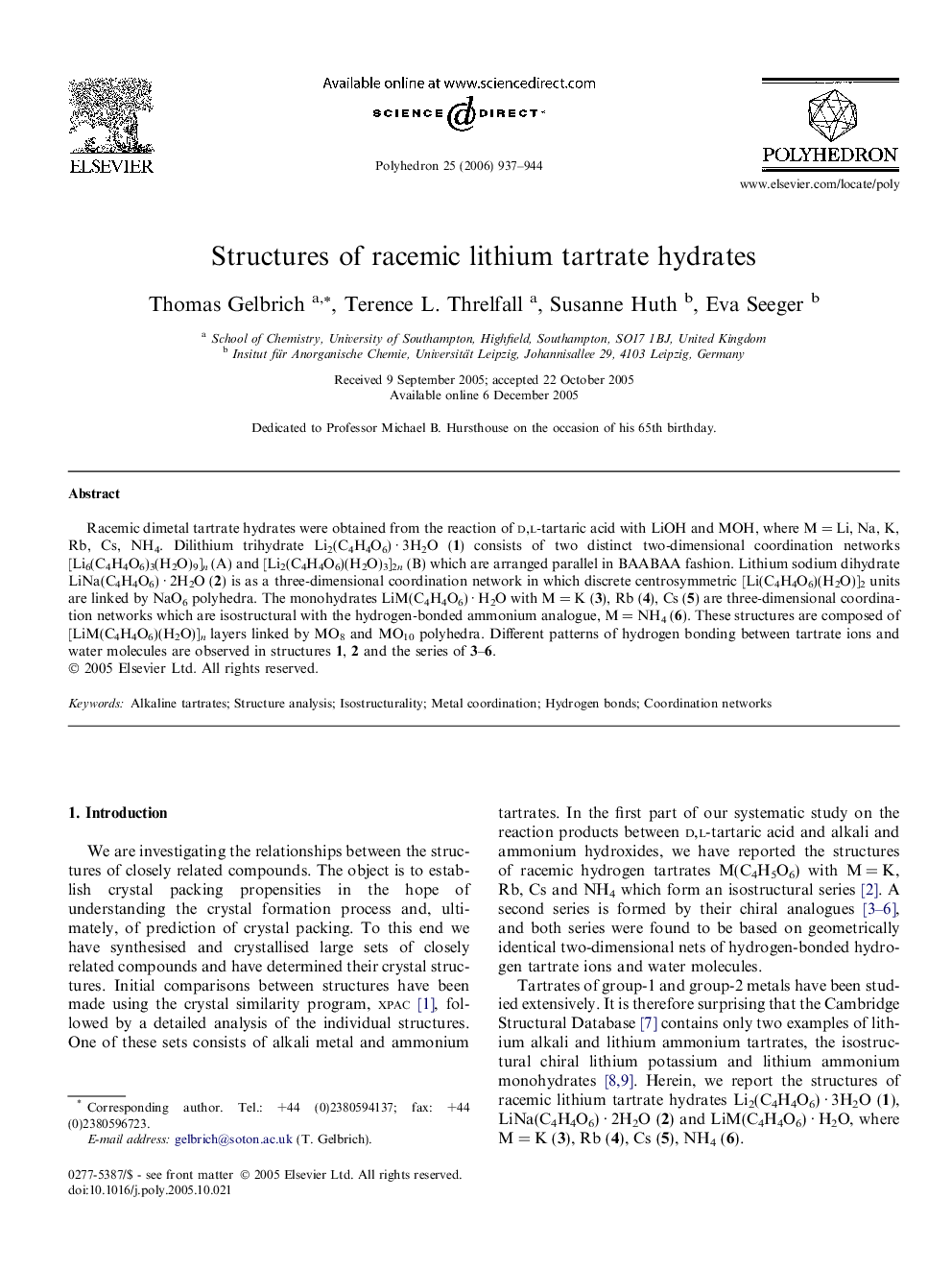| Article ID | Journal | Published Year | Pages | File Type |
|---|---|---|---|---|
| 1340895 | Polyhedron | 2006 | 8 Pages |
Racemic dimetal tartrate hydrates were obtained from the reaction of d,l-tartaric acid with LiOH and MOH, where M = Li, Na, K, Rb, Cs, NH4. Dilithium trihydrate Li2(C4H4O6) · 3H2O (1) consists of two distinct two-dimensional coordination networks [Li6(C4H4O6)3(H2O)9]n (A) and [Li2(C4H4O6)(H2O)3]2n (B) which are arranged parallel in BAABAA fashion. Lithium sodium dihydrate LiNa(C4H4O6) · 2H2O (2) is as a three-dimensional coordination network in which discrete centrosymmetric [Li(C4H4O6)(H2O)]2 units are linked by NaO6 polyhedra. The monohydrates LiM(C4H4O6) · H2O with M = K (3), Rb (4), Cs (5) are three-dimensional coordination networks which are isostructural with the hydrogen-bonded ammonium analogue, M = NH4 (6). These structures are composed of [LiM(C4H4O6)(H2O)]n layers linked by MO8 and MO10 polyhedra. Different patterns of hydrogen bonding between tartrate ions and water molecules are observed in structures 1, 2 and the series of 3–6.
Graphical abstractA systematic study of the structures of LiM tartrate hydrates (M = Li, Na, K, Rb, Cs, NH4) shows the occurrence of two- or three-dimensional coordination or hydrogen-bonded networks. Their similarities and differences are highlighted.Figure optionsDownload full-size imageDownload as PowerPoint slide
